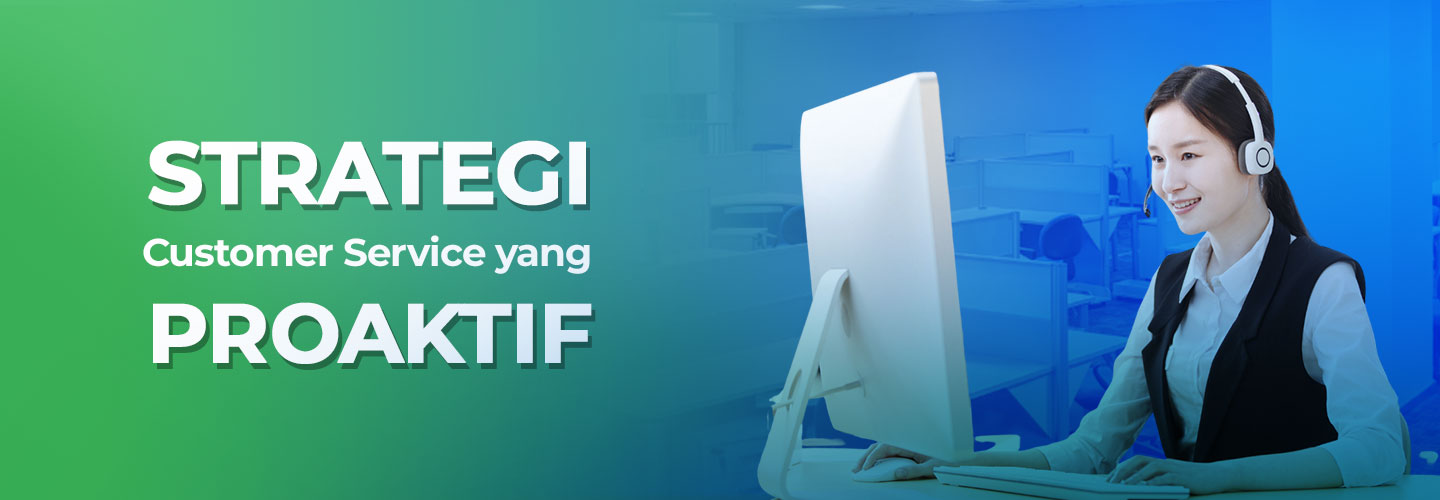Proactive Customer Service and How to Do It

Building good relationships with customers is a very important thing to pay attention to for a business. The role of the support team is very crucial to understand customers who continue to grow. Not only by receiving feedback or complaints, but also by understanding their position and understanding customer needs.
Once you understand your customers, half the work of keeping them happy can already be done. To achieve such customer satisfaction, you must not just wait for them to come and react. You need to consider strategies to shift from reactive to more proactive customer service.
What is Proactive Customer Service?
Proactive customer service is support that is able to anticipate a buyer's needs (or problems) before they become aware of them or need to contact you for help. Some examples of proactive customer service include:
- Notify customers of product-related errors or issues such as shipping delays and service interruptions
- Introducing customers to new products or services they might like
- Looking for ways to improve customer experience such as providing airline seat upgrades
Basically, every customer likes convenience and is even willing to pay more to get good service. Today, every customer prefers products with proactive services by adopting a customer-centric approach. Proactive service can help reduce the number of customer complaints and churn rates.
With proactive service, you can anticipate problems before they occur, saving customers time and effort. If there is an impending disruption to service, a proactive approach is to notify customers immediately. This is better than waiting for the customer to contact you and apologizing afterwards.
How to Create Proactive Customer Service
Proactive and reactive customer service differs from the first step taken. Businesses that provide proactive services initiate contact first with customers. Here's how to create proactive services in a business.
1. Update self-service options
Creating a self-service customer service option can make it easier for customers to access information faster, easier, and much more conveniently than having to contact an agent. Preparing answers before questions arise not only saves you time, but is also an option that customers want to have.
How to make self-service more effective can be done by adding FAQs to the website. Additionally, you can also create product training videos, add escalation options to your chatbot, or even invest resources in creating comprehensive product knowledge for your customers.
The best step to improve customer experience is to ask your support team to share insights from recent customer conversations. The only way to solve the problem is to start the conversation proactively. Simple steps you can take include creating customer satisfaction and feedback surveys that can give you an idea of their feelings about your product.
2. Admit mistakes and correct them
Making mistakes is human, but you have to be honest and correct them. There will be inevitable times when your product or service is not at its best. This can occur due to delays in delivery or bugs in the product. In general, your customers understand that too.
Sending an apology email, posting on your social media accounts, or acknowledging the problem via your website can let customers know that the issue is being fixed before they have to call and complain. Add details to keep your customers fully informed, such as:
- Estimated time to resolve the problem that is occurring
- Refund/credit information for delays if any
- How to contact the support team if they have other questions
3. Bridge your gap with Existing Customers
Proactive customer service is not just the responsibility of the support team. This is a commitment of all team members who do not deal directly with customers to learn more and offer more interaction with your customers.
According to a Hiver survey report, 66% of customers consider a company's customer service to be very important when making a purchase. The use of helpdesks is outdated and can hinder internal collaboration. This is what causes you to miss opportunities to offer seamless and proactive customer support.
You can use multichannel customer service solutions to collaborate with teammates, create dashboards, get customer feedback, and more.
In general, the proactive strategy carried out by your support team should only be organized based on customer needs. Before deciding to use a vendor or chatbot, make sure to choose the channel that is most familiar with your customers' needs.